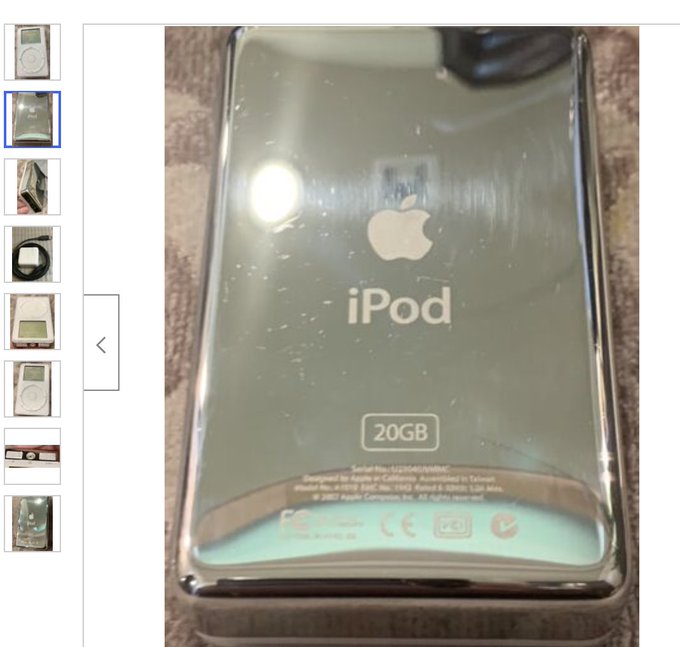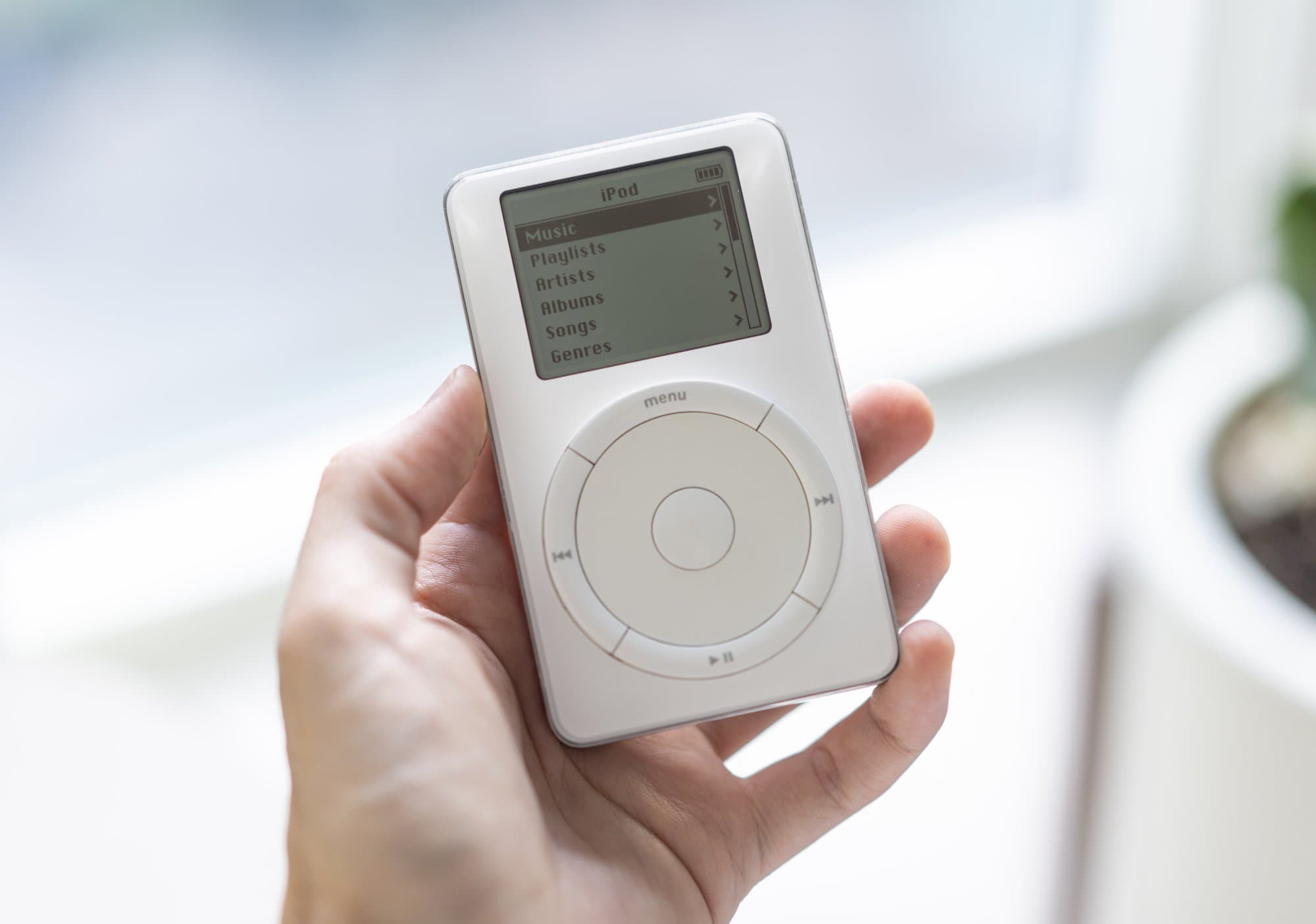
1,000 songs in your pocket.
You’ve probably heard that iconic marketing slogan before even if you never had an original iPod. Apple referred to the iPod as a "breakthrough digital device" when they announced it. The first iPod came at a time when the portable audio player landscape was.. nomadic (pun intended) at best.
MP3 players were already around when the iPod came out in 2001. Sales of early MP3 players were growing but they all had key limitations. You had to choose whether you wanted a smaller, flash memory player with extremely limited storage or a larger hard-drive based player.

Various portable MP3 and MP3 CD players in the early 2000s. Few were usable with just one hand on the go.
None of them were easy to use or elegant. They were often cluttered with buttons, had subpar software and were hard to navigate. There were also other options like MP3 CD Players and Sony MiniDisc players (I loved my MZ-R70).
The iPod was different. It was a sleek, shiny stainless steel and white device the size of a deck of cards. Its stellar industrial design turned heads. This was not just an audio player you used to play music. It said something about you the same way using a Mac vs a PC said something about you at the time. You were different; maybe a creative even. You valued well-crafted products.
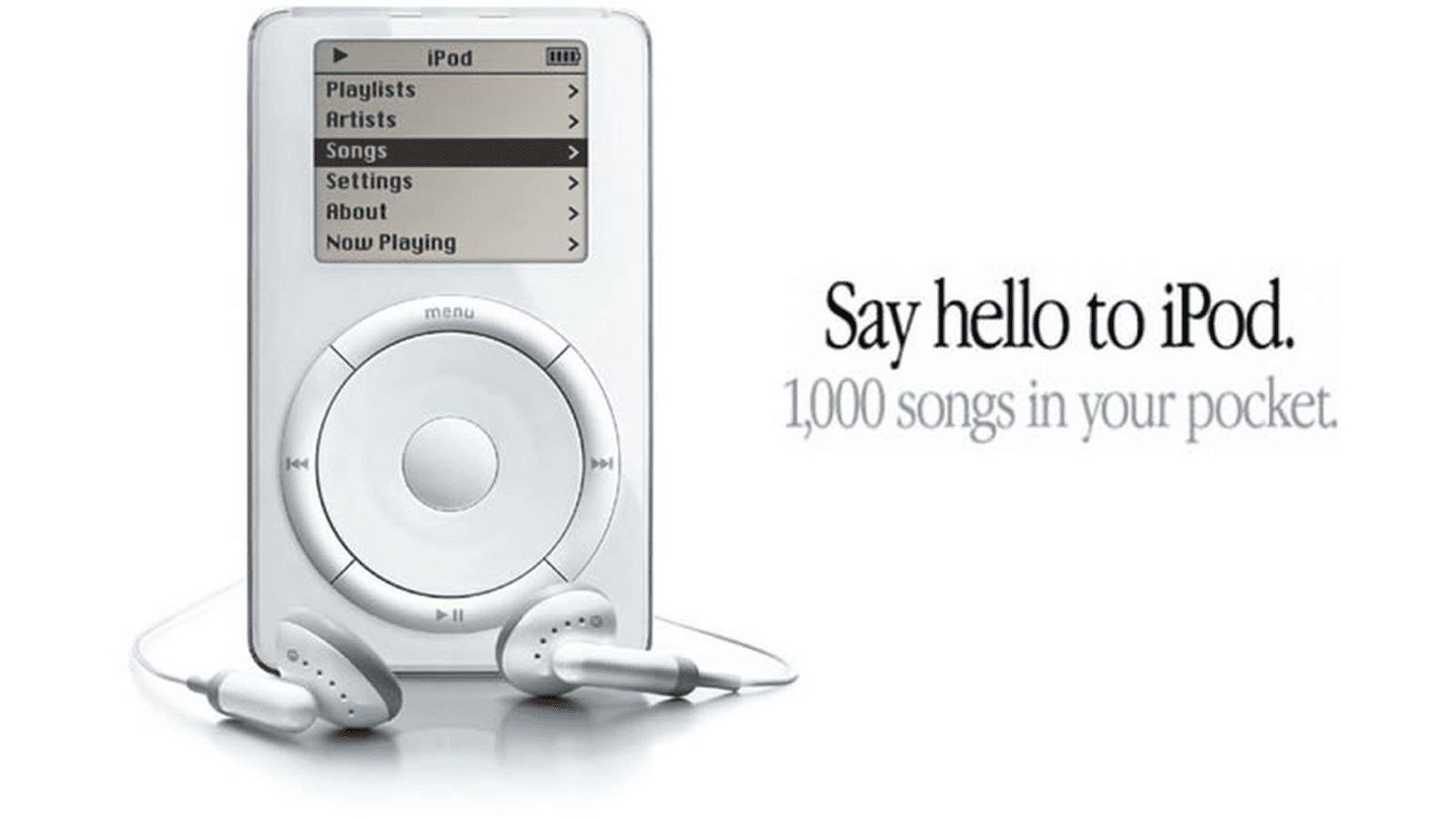
The iPod was a noteworthy device for a few reasons:
- Size + Storage: While there were other devices like the Creative Nomad Jukebox and Archos Jukebox with 6GB drives, they were almost the size of CD players. With the iPod you didn't have to choose between portability and storage. This was made possible by the iPod's 1.8-inch hard drive, something Apple's head of engineering first discovered from Toshiba while on a trip to Japan. Other players used traditional 2.5" notebook hard drives.
- Speed: The iPod used FireWire 400 instead of much slower USB 1.1 like competitive devices used at the time. You could load a CD onto your iPod in 10 seconds; about 30 times faster than other devices.
- Scroll wheel: This usefulness and simplicity of this cannot be overstated. I'll dive into it more later.
- Elegant industrial design: As mentioned above, this thing is beautiful. Today we'd refer to it as a brick.. but it's still a shiny brick.
- Anti-skip protection: The downside with hard-drive based mp3 players is they would skip when moved around. The iPod had 20 minutes of anti-skip protection thanks to its built-in 32MB flash memory buffer. This also had the benefit of increasing battery life to 10 hours by limiting how often the hard drive needs to spin up.
- iTunes + Auto-sync + Playlists: Apple made sure to make it known that the iPod with iTunes was the first "complete and seamless MP3 music solution." Using iTunes to manage your music and automatically sync it with your iPod was a dream compared to the clunky software required for other MP3 players. Notably, iTunes made it easy to create playlists and the iPod made them easy to play.
- Large backlit display: Featuring an LED-backlit LCD display with 160x128 resolution, the iPod could display six lines of text and song details at a glance.
- CD-quality sound: While it wasn't a huge feature of the iPod, Apple boasted that the included headphones featured Neodymium transducer magnets to help you get enhanced frequency response to get the most out of the high-bitrate songs.
- White headphones: We expect it now with Apple devices, but at the time every other device came with black headphones and a black cord. Apple knew the iPod would live in your pocket and they needed a way to signal that you had one (and of course white to match the iPod itself). The white cord and earbuds became so popular Apple leaned into them for a whole series of iPod dancing "silhouette" commercials.
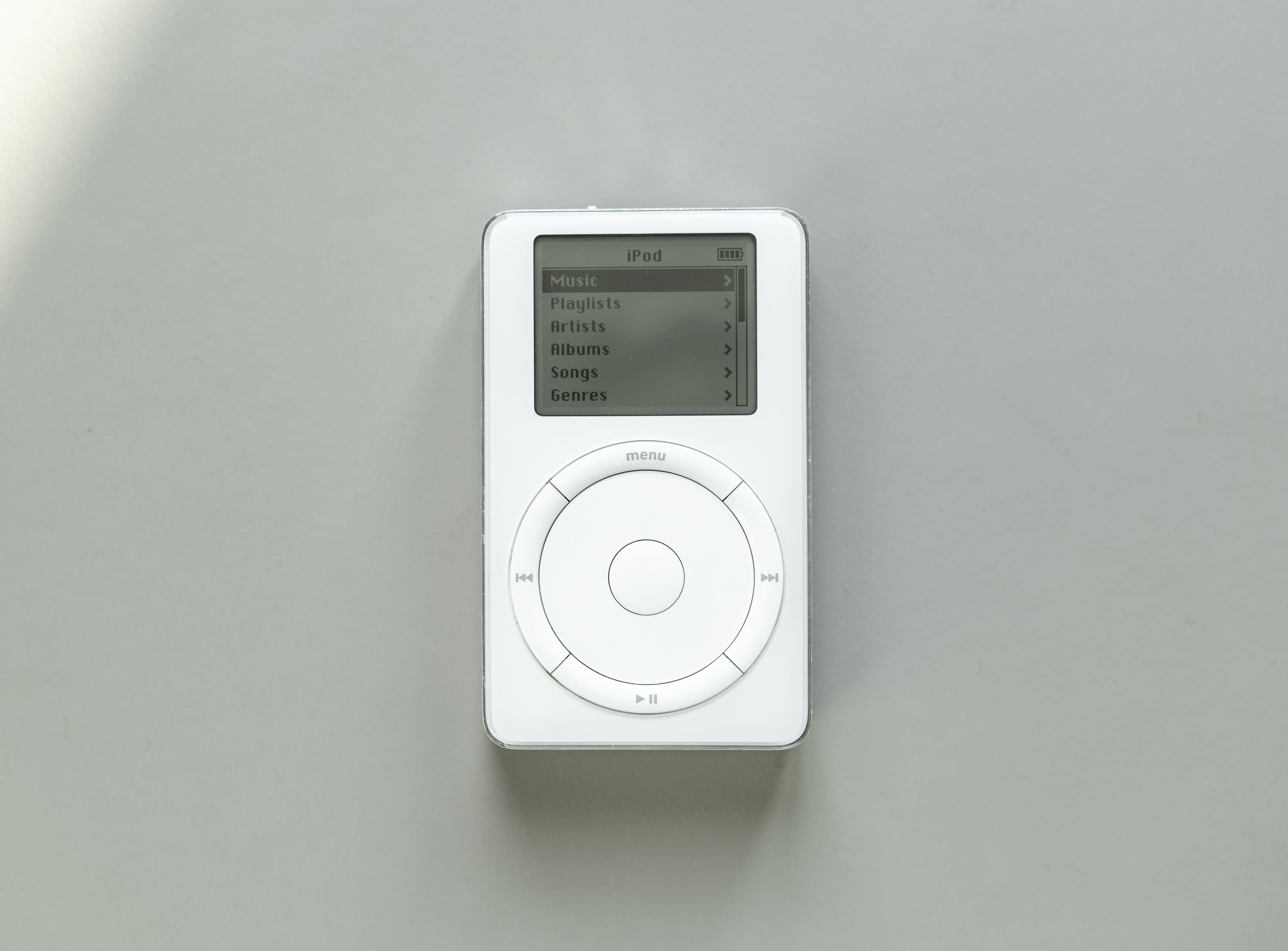
All of these things combined made the iPod something the industry had to take note of. It wasn’t the most storage you could get in an MP3 player at the time1, it wasn't the first MP3 player and it definitely was not the cheapest with it's $399 price point at launch. But it was elegant, easy to use and when paired with iTunes, it was the complete package.
Using the iPod still wasn't easy by today's standards. First off, you had to have your own music library of MP3 files on your computer. The iTunes Music Store had not come out yet, nor were there any music streaming subscription services yet. So either you purchased them on some other website, pirated them from Napster, BitTorrent, Scour, IRC, Kazaa, LimeWire and their ilk or ripped them from a CD. Then you had to connect your iPod to your computer, fire up iTunes, sync your music, then disconnect it before you could play it.
But it was a different time. Managing your own music library was a burden to be proud of. People would boast about how many songs and gigabytes their library consumed and how they organized it. They were proud of the work they put into their libraries and cleaning up their audio file ID3 tags and customizing their WinAmp player.
Music piracy was an especially hot topic at the time. The iPod included no form of DRM and received some criticism that the iPod would only proliferate piracy. Anyone remember Apple's "Rip. Mix. Burn." ad campaign? They showed the ease of ripping music to your Mac from CDs you owned. Apple also packaged the iPod itself with a sleeve that clearly said "Don't steal music." on it.
Some industry critics lamented that Apple even bothered to enter the consumer electronics space; a space where products traditionally came with lower profit margins and stiff competition. The iPod was also Mac-only at launch. Would this turn people away or convince them to get a Mac? Eventually this was a non-issue as Apple quickly began supporting Windows PCs.
Here's the iPod announcement in 2001:
Design
While clear in hindsight, the iPod's scroll wheel2 was core to the success of the iPod. It flawlessly solved the problem of scrolling long lists of songs, adjusting volume and navigating menus on a small display that lacked touch capabilities. Combined with audible click feedback, it was a breeze to use.
In particular, it was easy to use with one hand. Not many MP3 players at the time were. You could raise the volume, skip a song, scrub through a song or navigate menus easily—even without looking at the screen.
In addition, when navigating menus there was a simple horizontal animation to help you understand whether you were drilling into or out of the menu. This was something iPhone OS 1 (it wasn't called iOS until iOS 4) ended up doing as well when it came out years later.
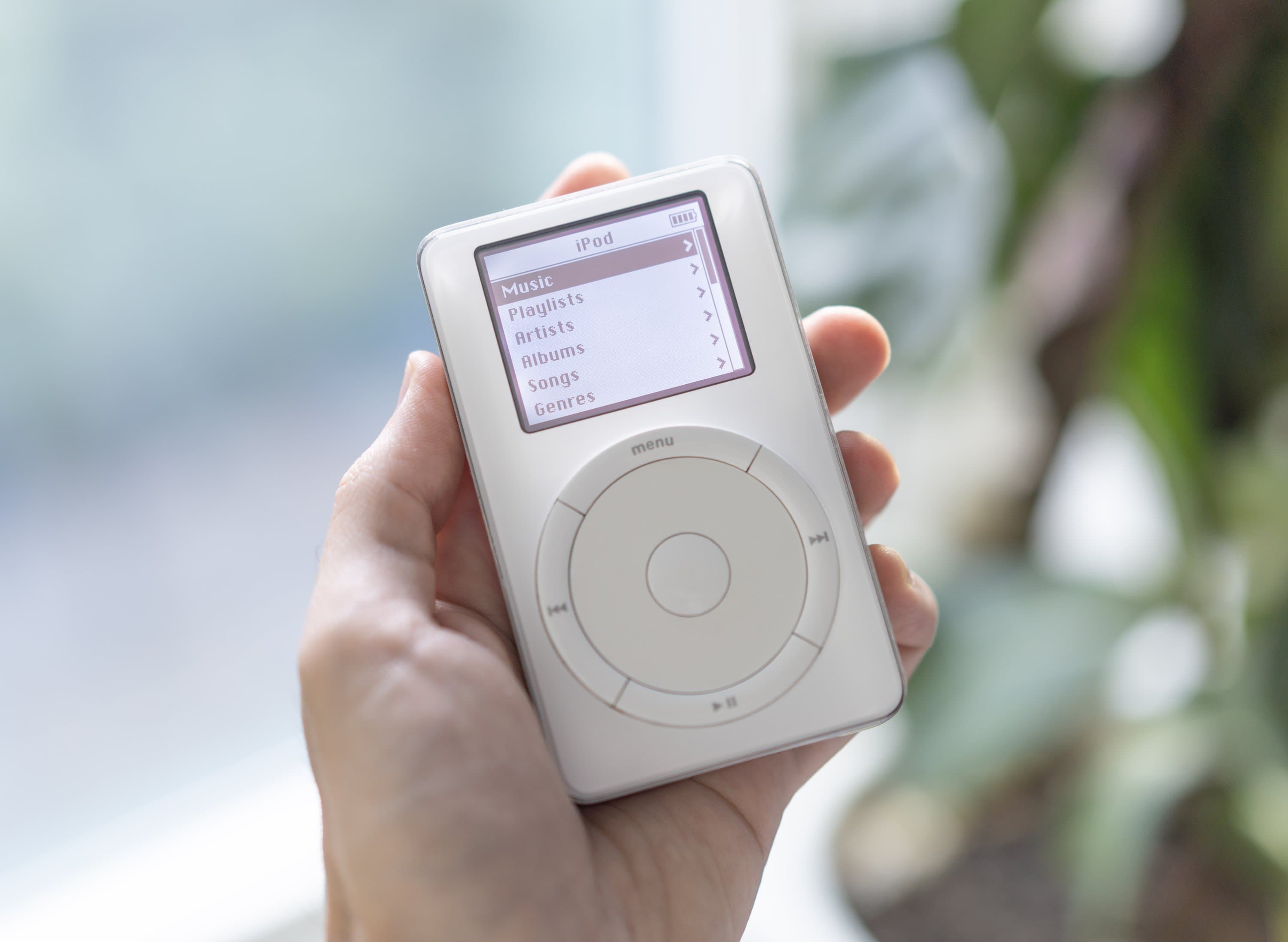
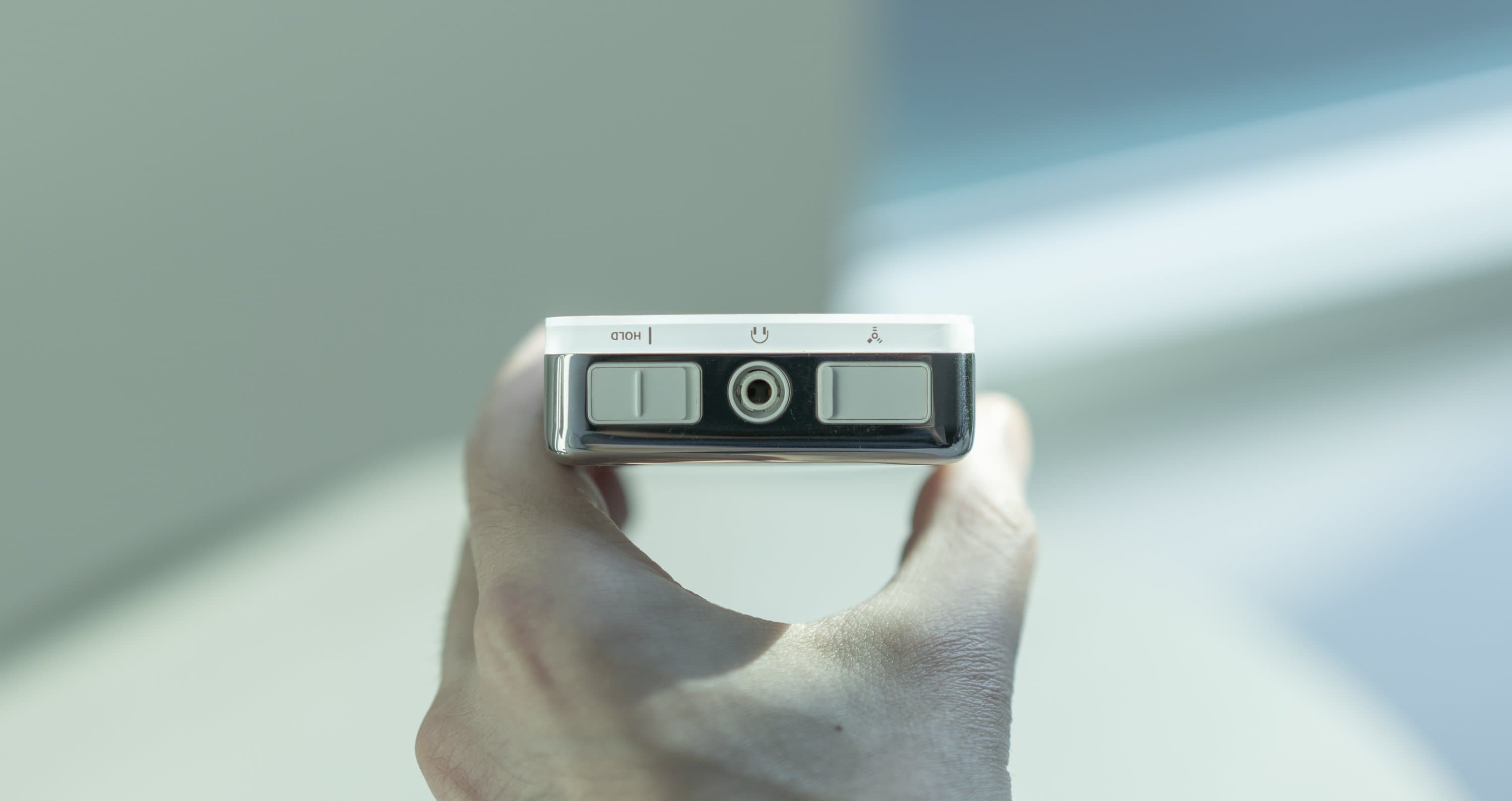

The iPod wasn't the first time a portable device had a control like the scroll wheel. For years, Sony had some variation of their—failed if you ask me—"jog dial" on devices like PDAs. However, it always felt like some afterthought bolted to the side of their devices; not nearly as precise or quick to use. And of course, Apple got some inspiration from the B&O BeoCom phone.
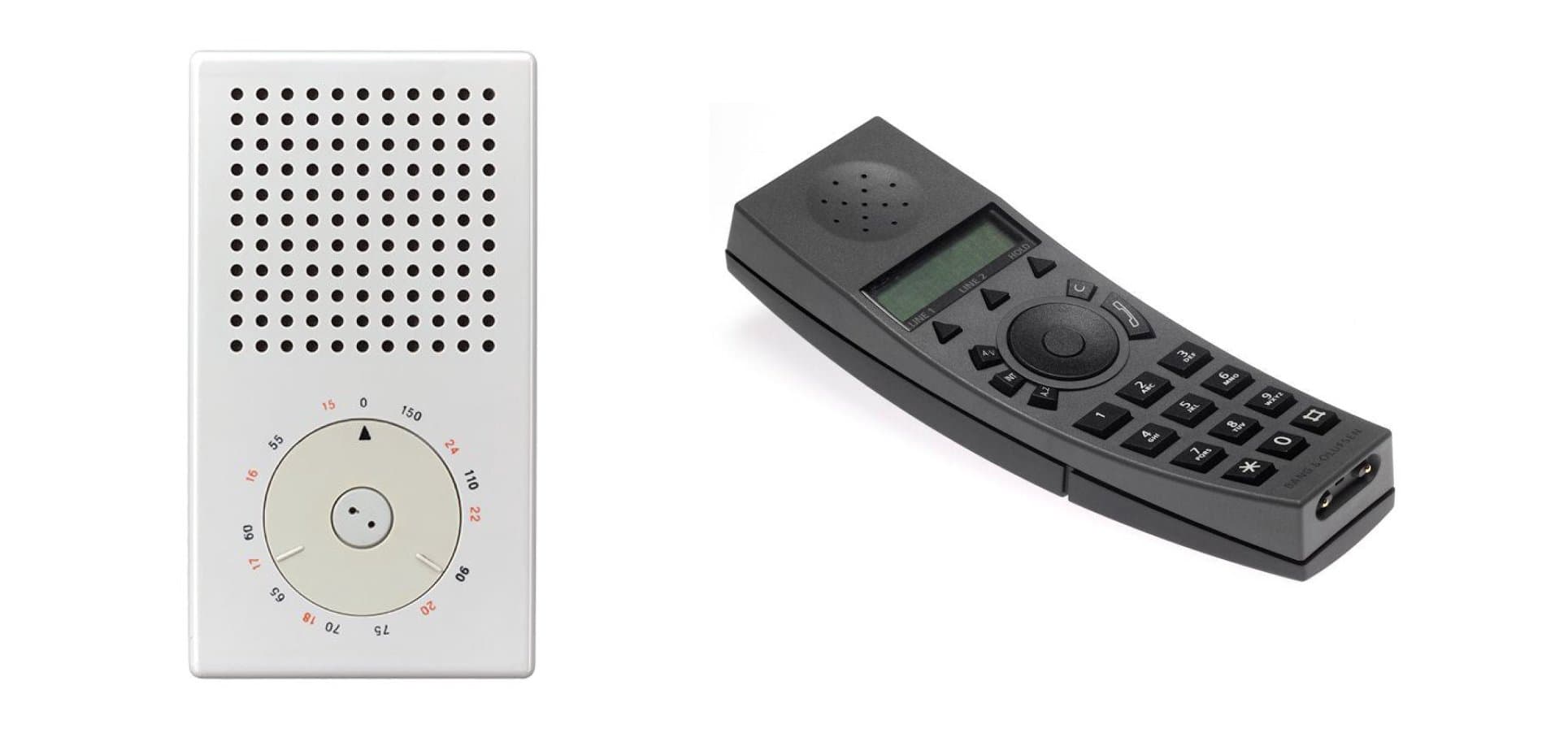
Apple was inspired by the form of the 1958 Braun T3 transistor radio and the function of the 1998 Bang & Olufsen BeoCom 6000 phone, which utilized a wheel to provide quick access to phone book contacts and provided audible feedback while scrolling.
While iPods are long gone and all iOS devices are touch-screen now, some of what Apple learned with the scroll and click wheel evolved into the digital crown found on the Apple Watch.
It's hard to imagine today what using an iPod in the early 2000s truly felt like. It was a dedicated device, singularly focused on helping you do one thing—play your favorite music—and do it well. It didn't need to multitask or have any other complexity to function. It was simple, elegant and polished device. We don't really have things like that today. Every mobile device is meant to be flexible, multitask and do just about anything for you, lending them to be more like a jack of all trades, master of none.
Finding an iPod
I have always admired the first iPod.3 In 2002 I purchased the second-generation 10GB iPod. I was in the middle of high school and that was a hefty purchase for me.
The second-generation iPod was nearly identical to the first-generation iPod except for more storage options (10GB and 20GB) and minor physical changes (notably, a touch-sensitive wheel replaced the mechanical scroll wheel, which was prone to getting dirty and requiring cleaning).
I eventually dropped that iPod with headphones plugged in and it broke the headphone jack. I opened it up, soldered it back on and unfortunately sold it. I’ve missed it ever since.
Earlier this year I began my search for a second-generation iPod like the one I had. I thought about looking for a first-generation but honestly I did not like how they had a piece of white plastic near the ports instead of the metal backing and was concerned about the high probability of the mechnical scroll wheel having issues.
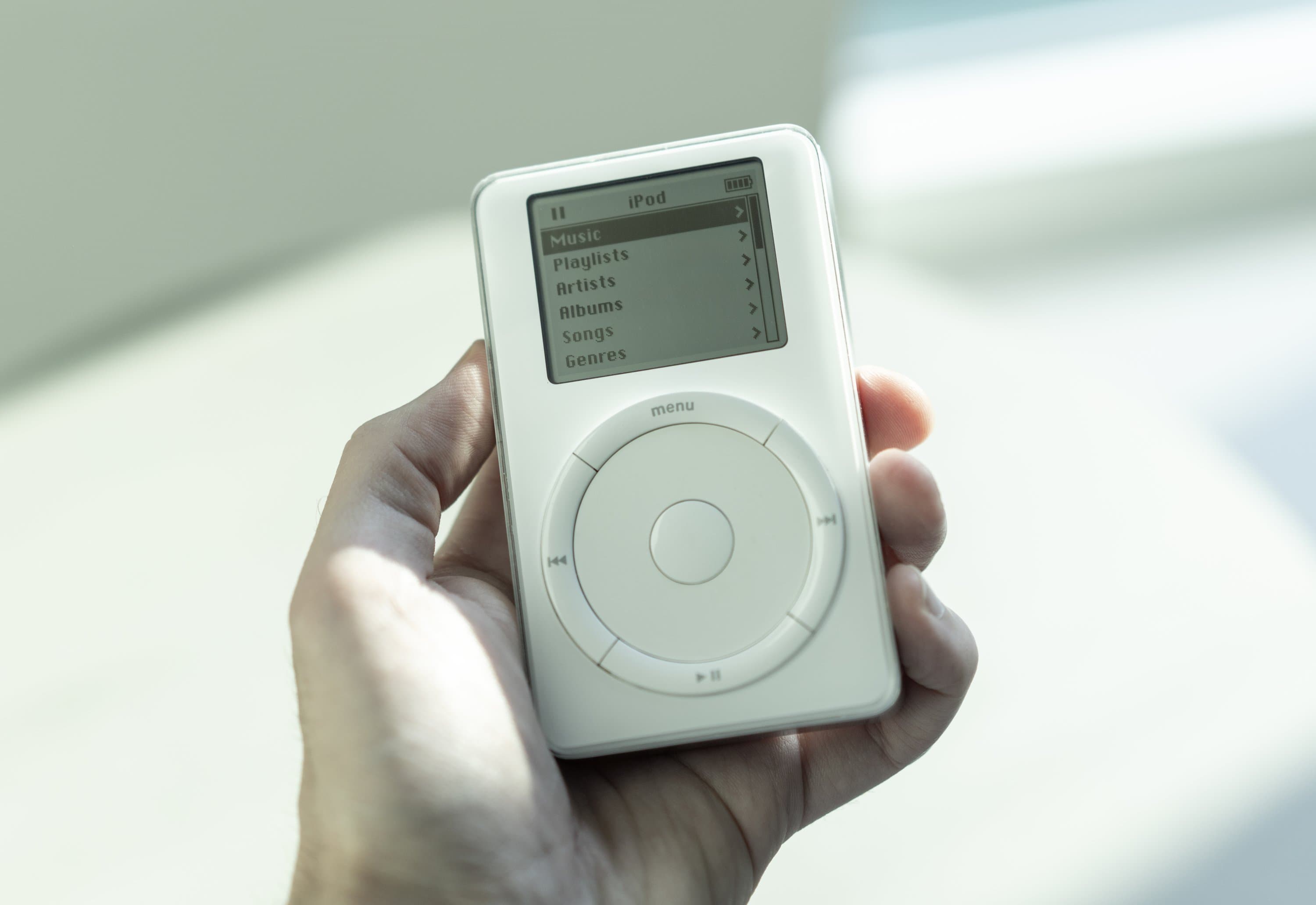
If you decide to do the same4, I can offer a few suggestions. First, we are talking about a 20 year old device (older if you opt for a first-gen) so you should be concerned about the state of the battery and hard drive. It's quite common to find people on eBay selling iPods where they've already replaced the battery, so that might be of interest if you don't want to do the work yourself or have to deal with it later.
Of course, the vast majority of the early iPods you see for sale will have tons of scratches and maybe even some dings. That's to be expected for such an old device, unless you plan on spending much more on a near-mint model; I even saw one selling a never-opened, sealed box iPod for $10k! However, since the front of the iPod is just plastic, a devoted owner can find specific polishing compound and significantly restore the faceplate to its former glory. It won't be perfect (at specific angles you may still be able to see the original scratches) but you likely would not be able to tell from eBay pictures.
After some months of casual searching I finally found one on eBay in good condition with a newly replaced battery that wasn’t outrageously priced. I paid about $190 including shipping.
Connecting and using the iPod
A few days later my new-to-me iPod arrived!
Would I even be able to connect this FireWire iPod to my modern M1-based MacBook Pro running macOS 12? Not too long ago Apple Music (née iTunes) stopped syncing iOS devices and that functionality was moved to the macOS Finder itself.
All I needed to do was find a way to connect FireWire 400 to Thunderbolt 3. This took quite a few adapters and dongles:
- Thunderbolt 3 to Thunderbolt 2
- Thunderbolt 2 to FireWire 800
- FireWire 800 to FireWire 400 (couldn’t find an Apple adapter, got one from elago)
- FireWire 400 6-pin to 6-pin Apple cable
These dongles definitely add up in cost, though I got at least one of them used on eBay. In total, I paid just under $90 for all of these. I had another FireWire cable that would have worked but I was seeking an authentic Apple cable. All-in this iPod setup cost me about $280. Worth it? Absolutely.
Fortunately, it worked flawlessly after I connected everything. After a brief moment the iPod showed a "Do not disconnect" message and the Finder app in macOS displayed the iPod: both as an iPod and as a connected hard drive.
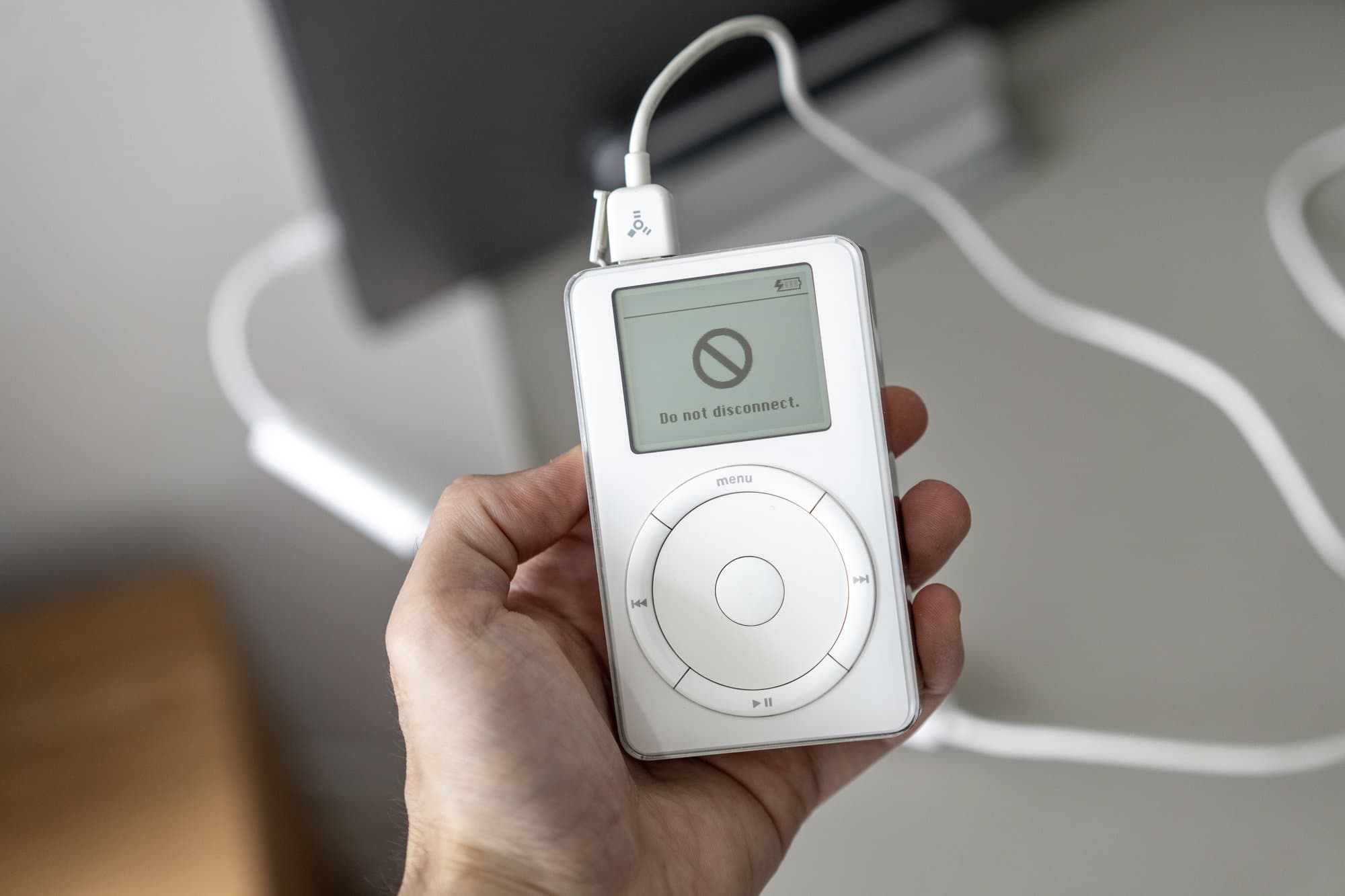
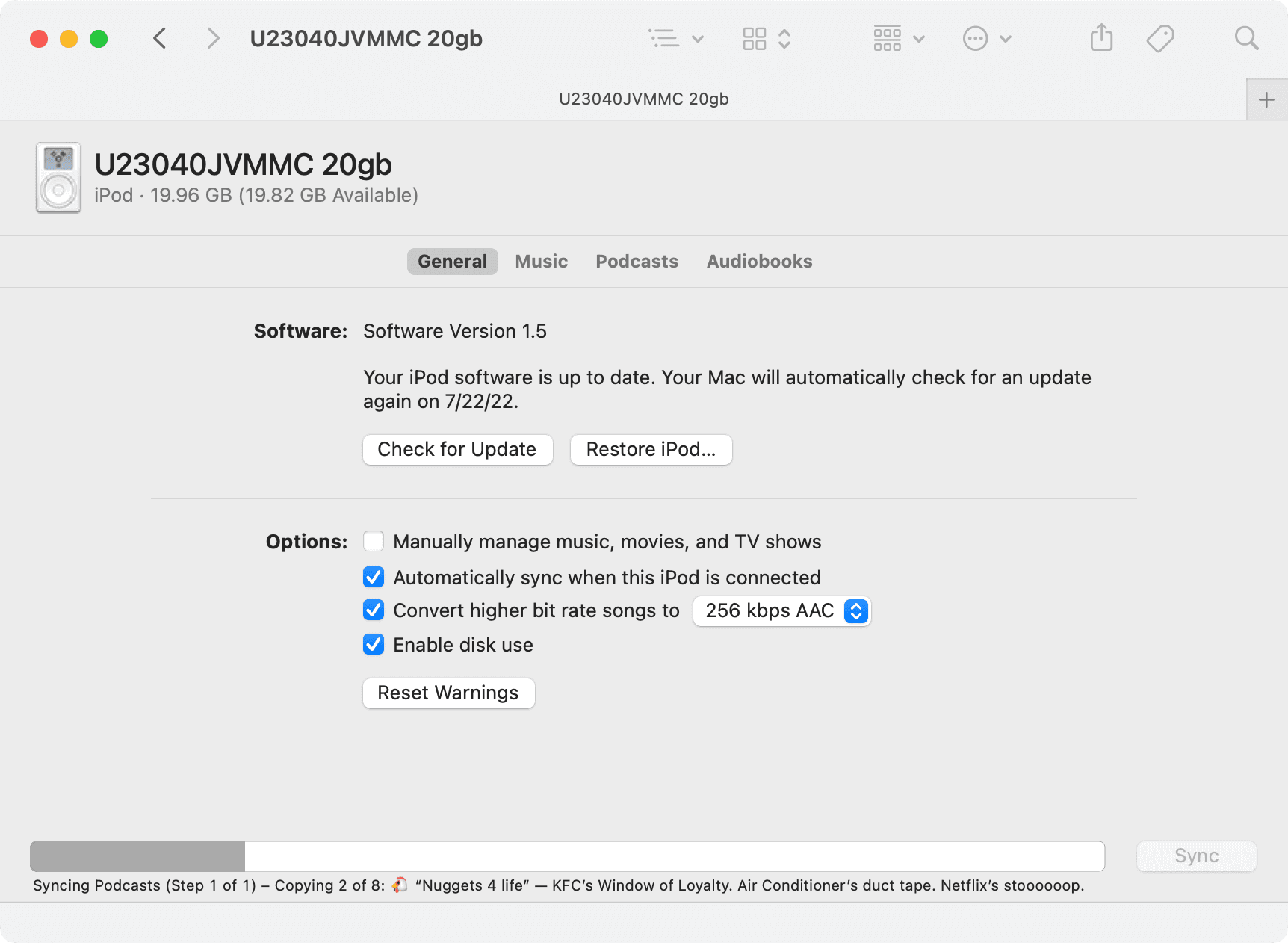
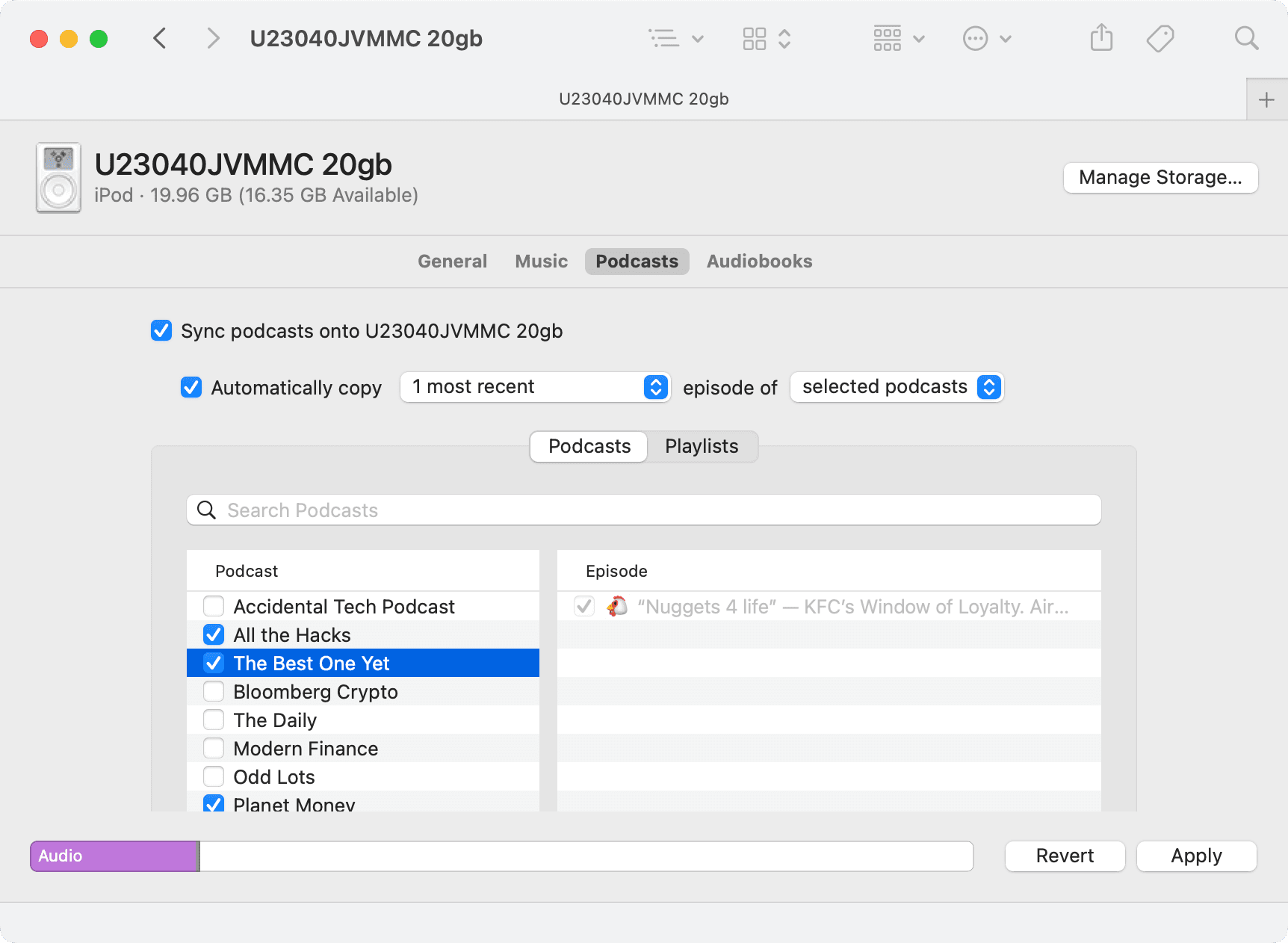
iPod connected to my Mac with FireWire 400 and accessed via Finder.
Selecting the iPod in Finder, you have the ability to sync music, podcasts and more. It's pretty basic and just loads up audio files it detects from your main Apple Music or Podcasts apps. Of course these are only for actual files you have; not for any music from Apple Music's streaming service for example. I selected a few podcasts and synced them. A few moments later I was listening to them on the iPod.
After syncing was complete, I ejected the iPod from Finder and removed the FireWire cable.
It took a moment to remember how to turn on the iPod. I had to turn off the Hold switch and press a button to wake it up. Then I navigated some menus to find a podcast to play. Scrolling line by line with the scroll wheel with its audible feedback was so satisfying. All the nostalgia came flooding back.
Then I heard the tiny 1.8-inch hard drive whir to life. I can't remember the last time I used a device with a spinning hard drive like this after so many years of using devices with SSDs. Though, at the same time I was a little bit paranoid about using a portable device like this with a spinning disk that felt so delicate.
Of course there’s no Bluetooth with the iPod so I found my AirPods Max 3.5” minijack to Lightning cable to connect them:
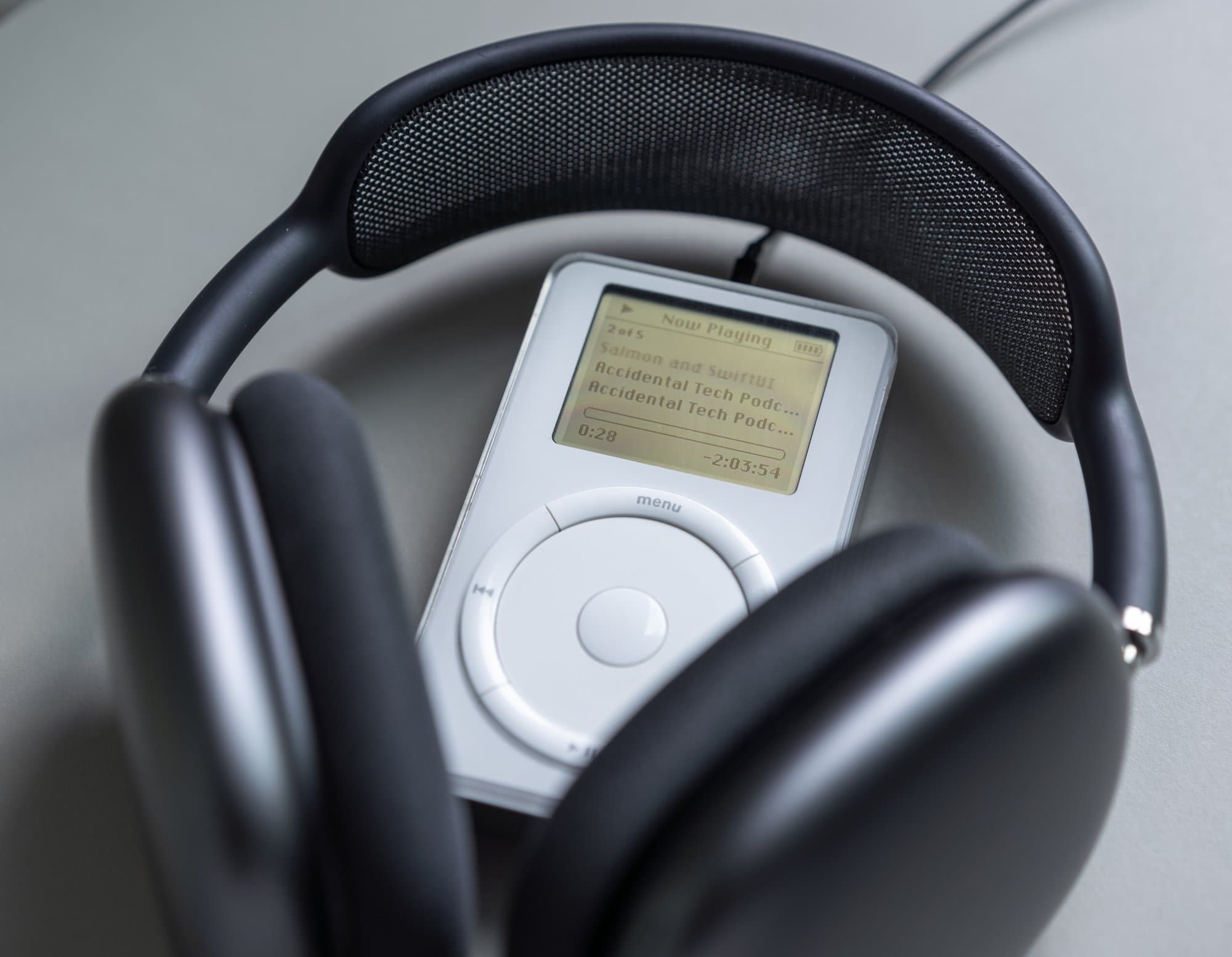
AirPods Max, meet iPod.
Impact
There's no need to state how influential the iPod went on to become: for Apple, for the industry, for pop culture and more. The first iPod is even in the Museum of Modern Art now. Some 450 million iPod devices have been sold.
Apple unveiled the iTunes Music Store about 1.5 years after the first iPod. It became dead simple to select a 128kpbs AAC song from their collection of 200,000 songs (today it's 43 million) at launch, pay 99 cents to download it and then sync with your iPod to have on the go.
The easiest way to fight piracy was with convenience and Apple really showed how powerful a complete package could be: elegant portable audio device, great music library software and a robust integrated music store.
The iPod wasn't the first MP3 player but it's impeccable industrial design, novel software and overall execution made it iconic.
What's next?
There's a lot of other interesting early Apple devices3 that I'd love to collect if I had the space but this iPod was the perfect start. I'm also a fan of the first-generation iPod Nano. If you're looking to get a taste of iPod nostalgia that might be an easy place to start. It was flash-based and had a USB connection.
Though I'm really curious about the tiny third-generation iPod Shuffle. It was poorly received due to its over-minimalism and lack of controls on device (Apple pushed the use of remote buttons on the headphones cord along with VoiceOver navigation).
1 A now-infamous comment about the iPod at launch was on the popular site Slashdot: “No wireless. Less space than a Nomad. Lame.”
2 The first-gen iPod had a mechanical scroll wheel while the 2nd-gen had a touch-sensitive scroll wheel. Later iPod generations called it the click wheel when the menu/skip/etc buttons were merged into the wheel itself.
3 In addition to most early Apple products, I'd love to own a Macintosh Centris 650, Apple ][, Macintosh Color Classic, Macintosh SE, G4 Cube, iMac G4, QuickSilver PowerMac G4, PowerMac G4 MDD, Clamshell iBook G3 laptop, 12-inch and 15-inch Titanium PowerBook, eMac, iMac G3... the list goes on. I have fond memories of using several of these machines many years back.
4 There's a whole community around iPod modding. People love to convert them to use SSDs instead of HDs, change the case and more. For example, the last generation iPod (the sixth-gen officially dubbed the iPod Classic, though you can also refer to all six generations as iPod Classics) can even be modified to add Bluetooth. I'm curious to look into converting mine to using an SD card for storage.
